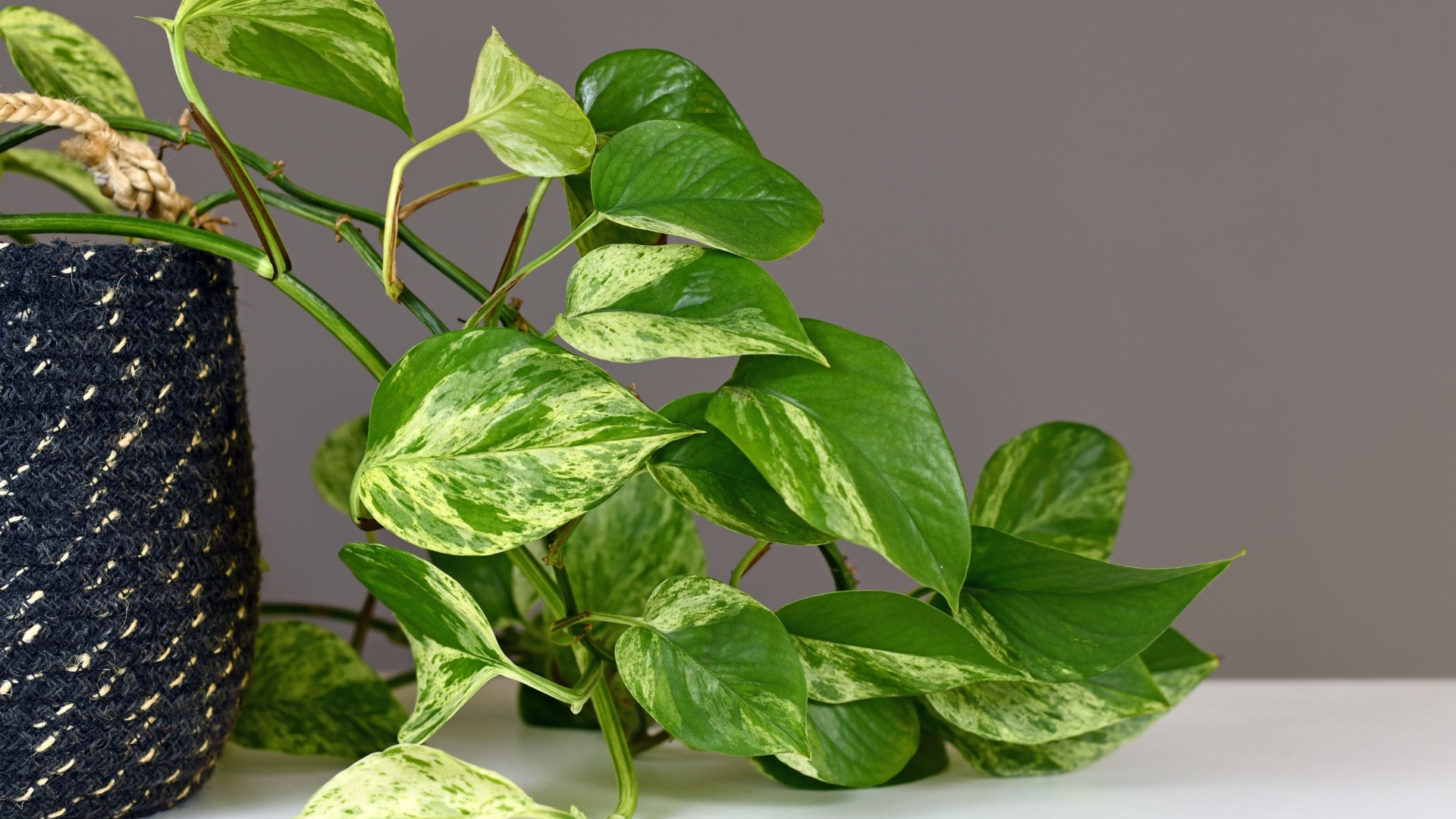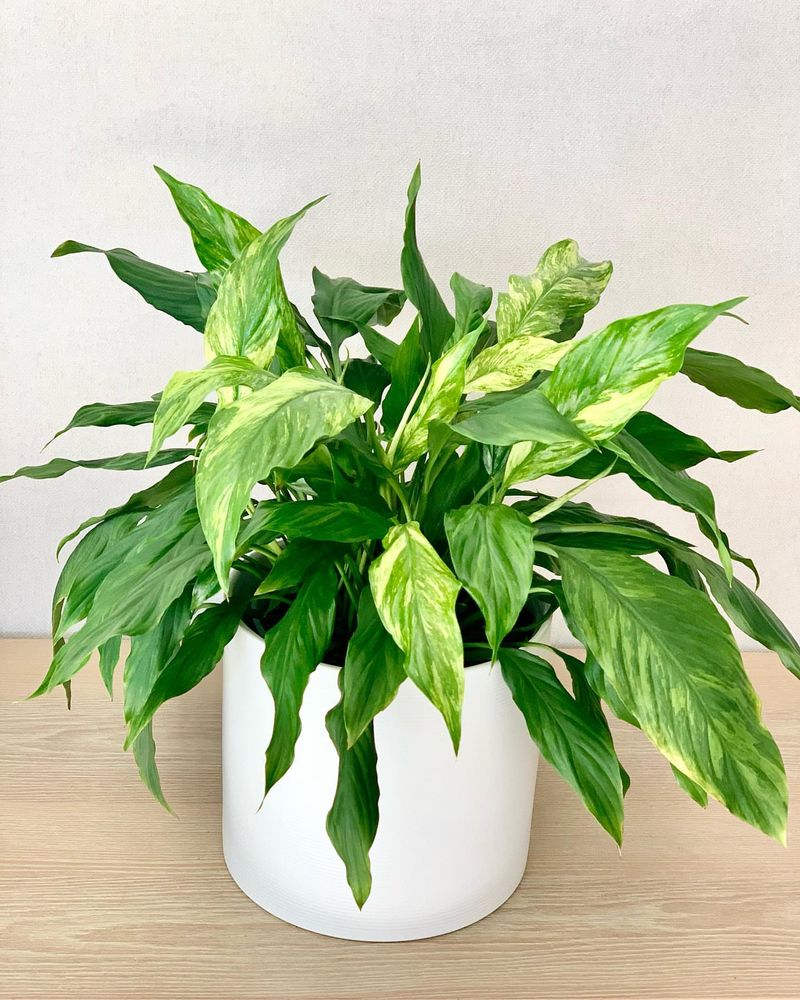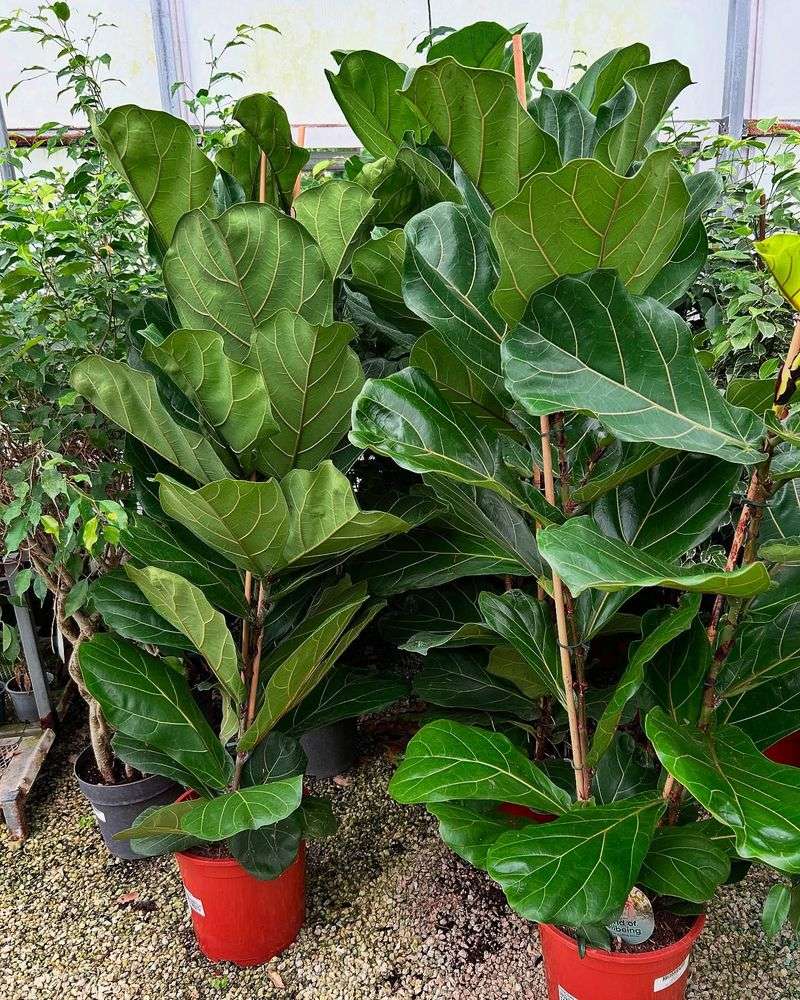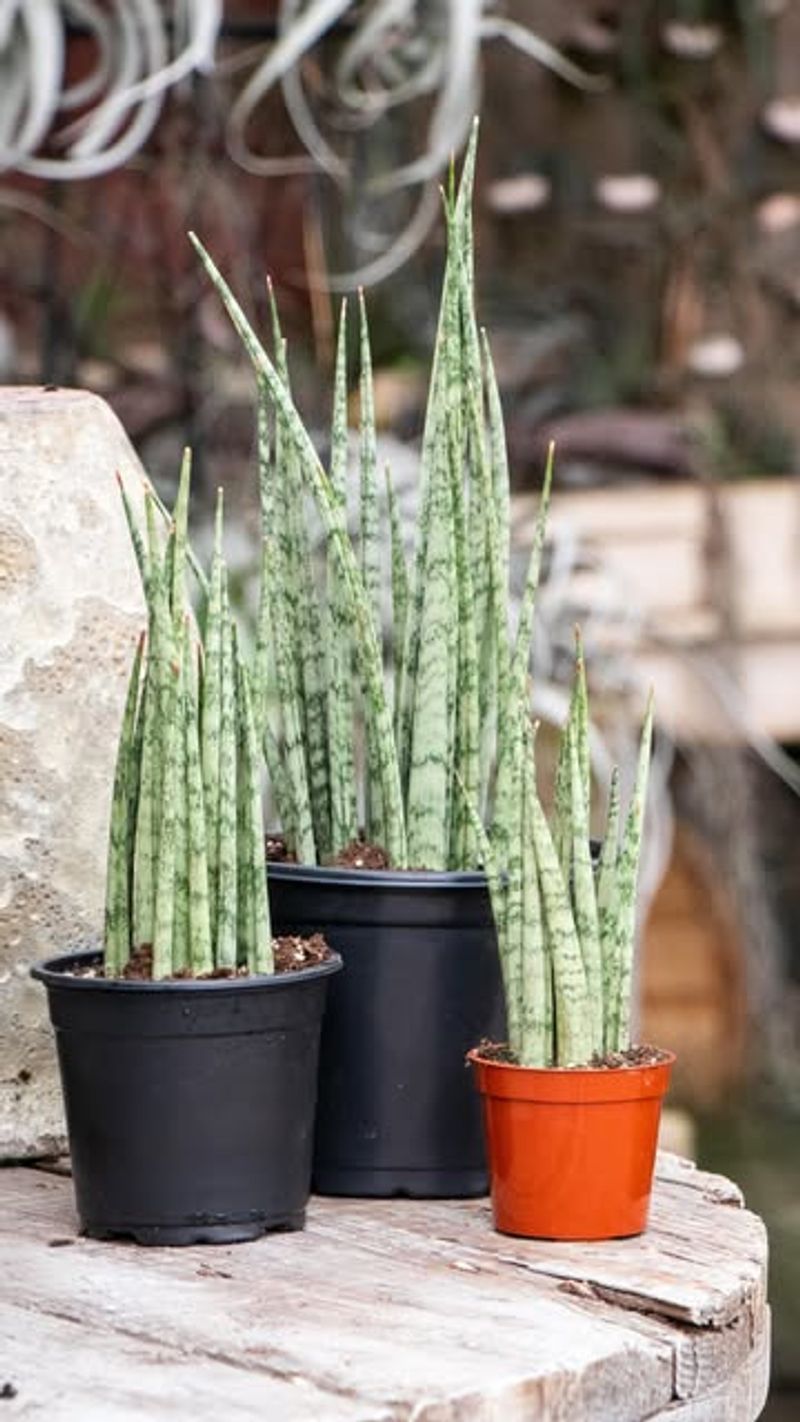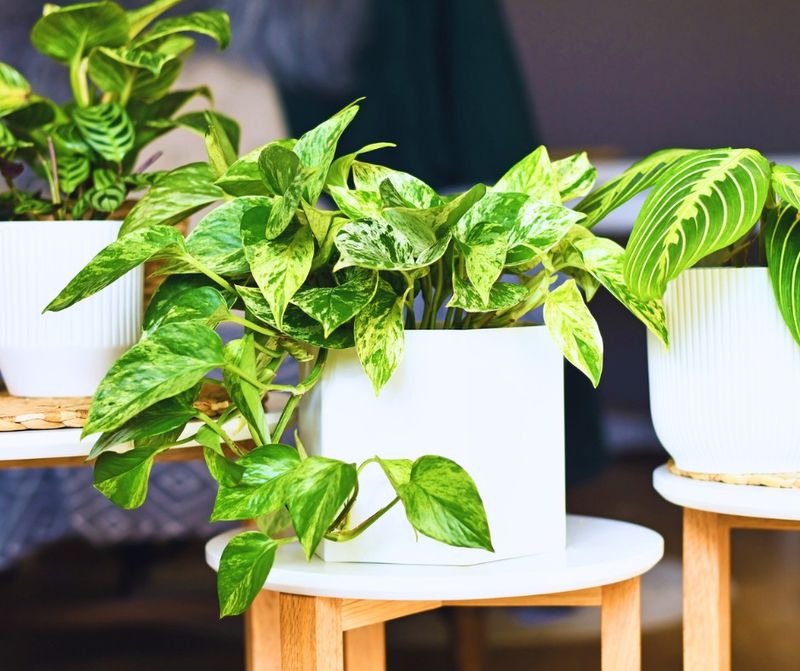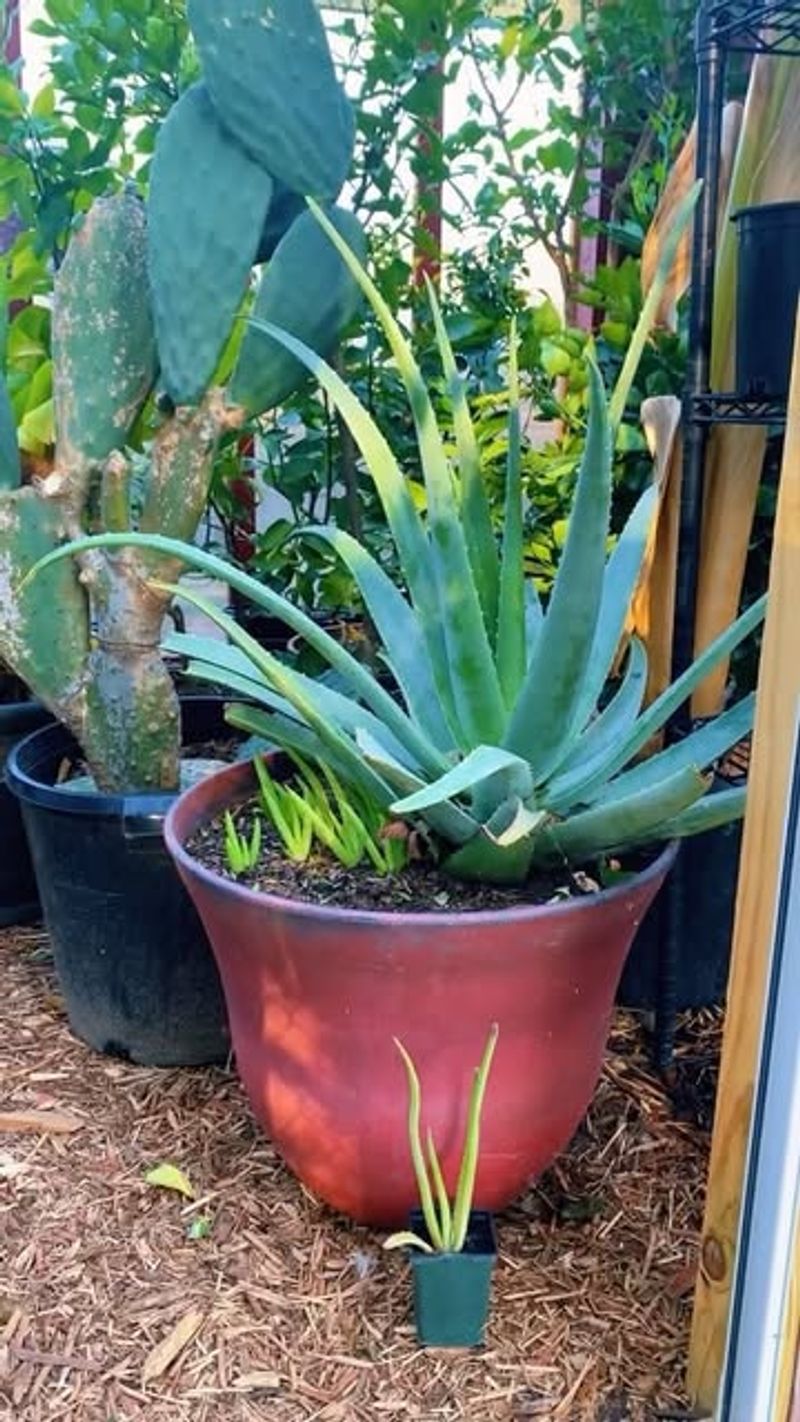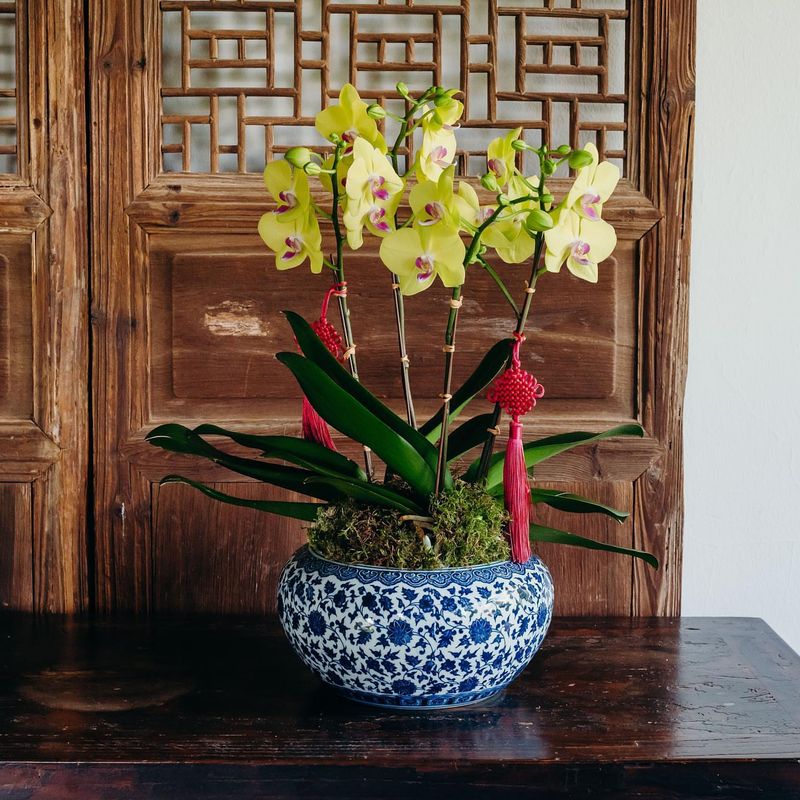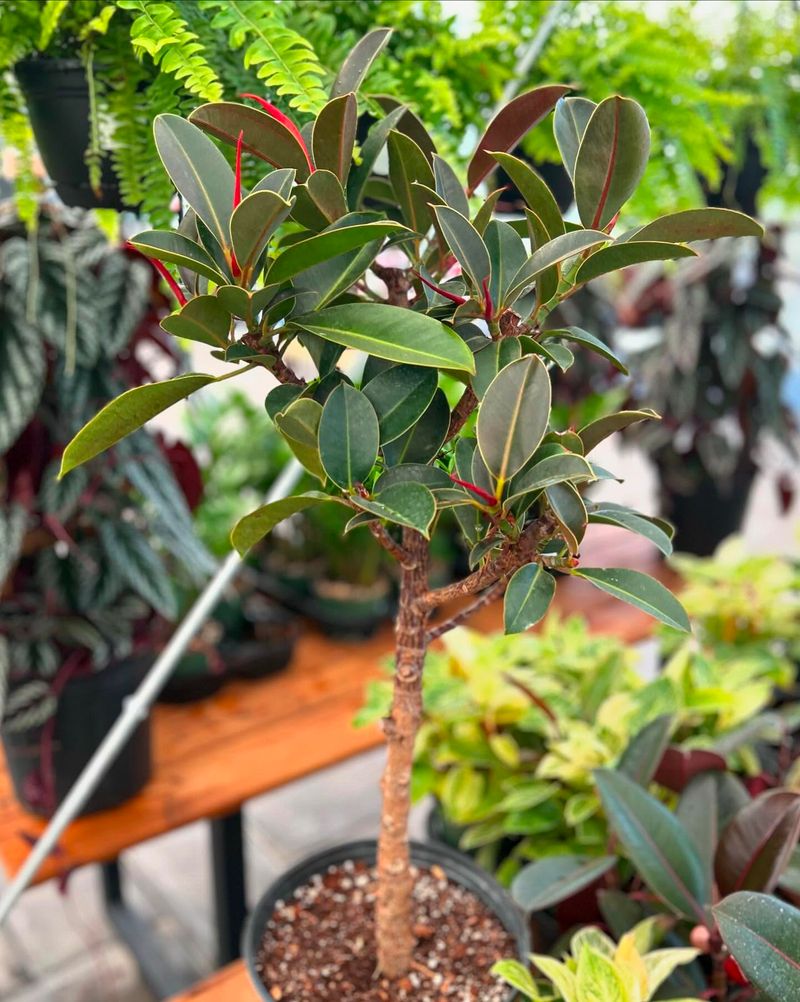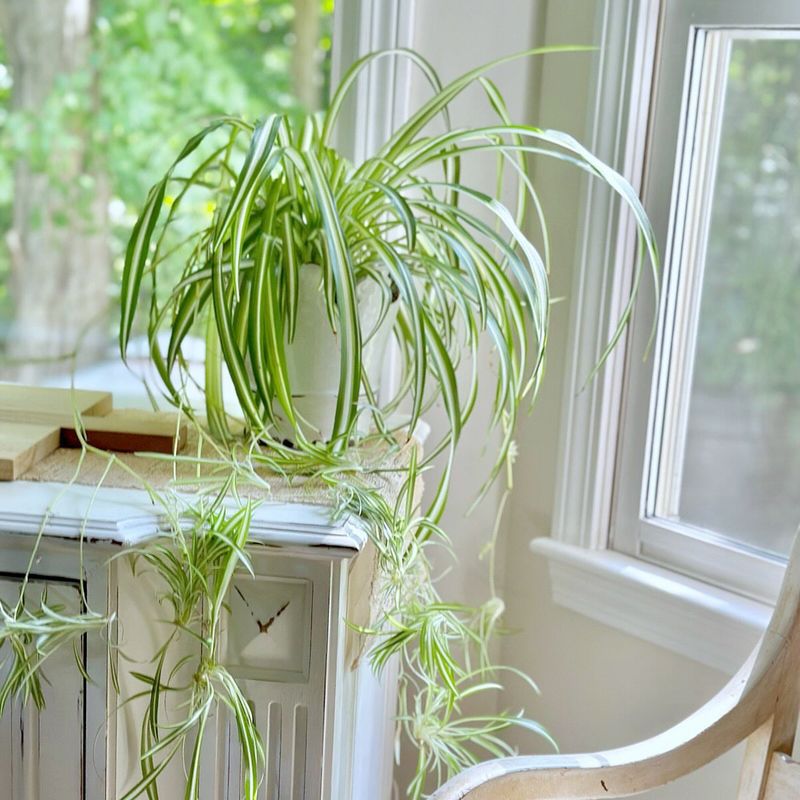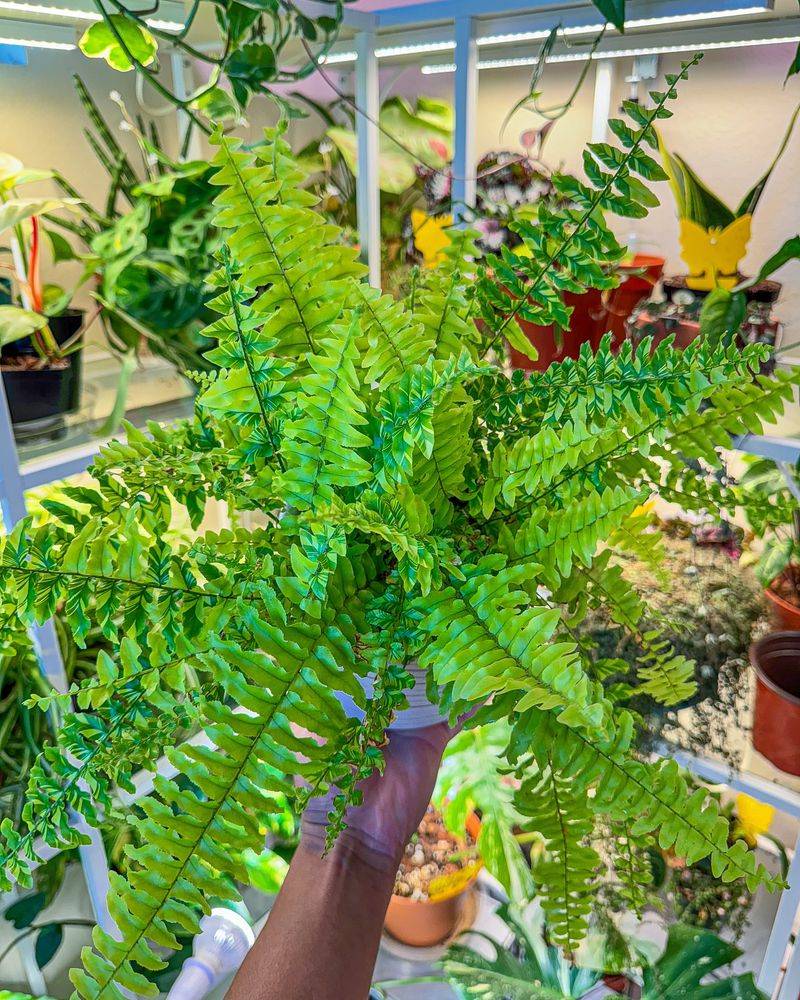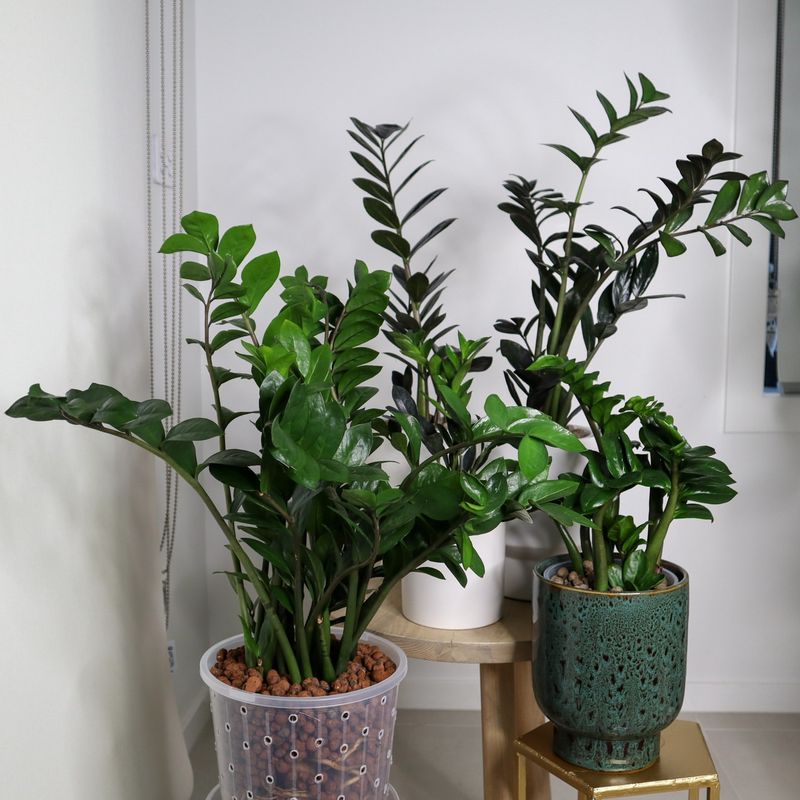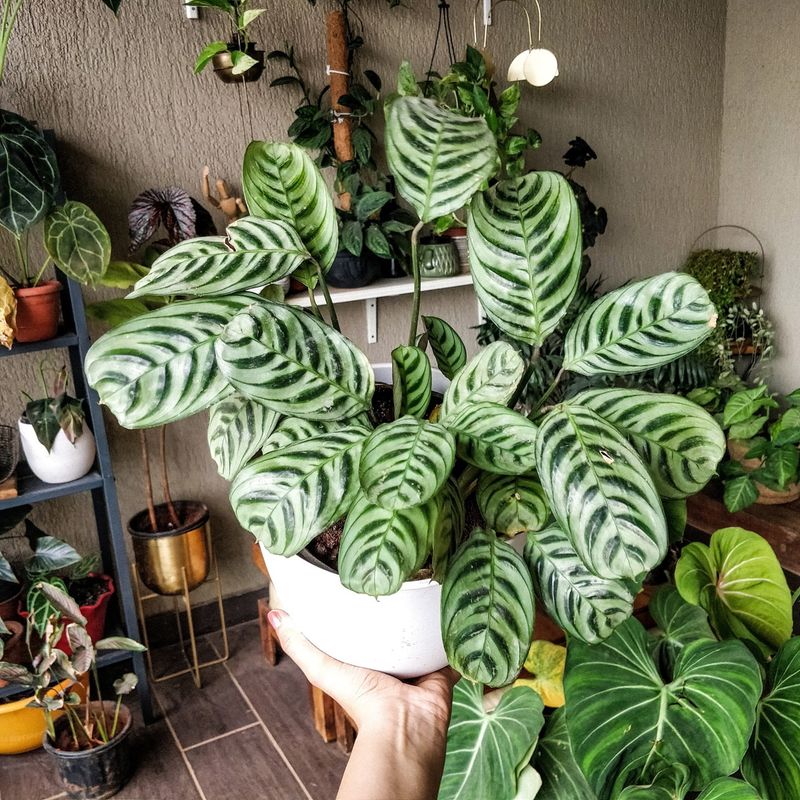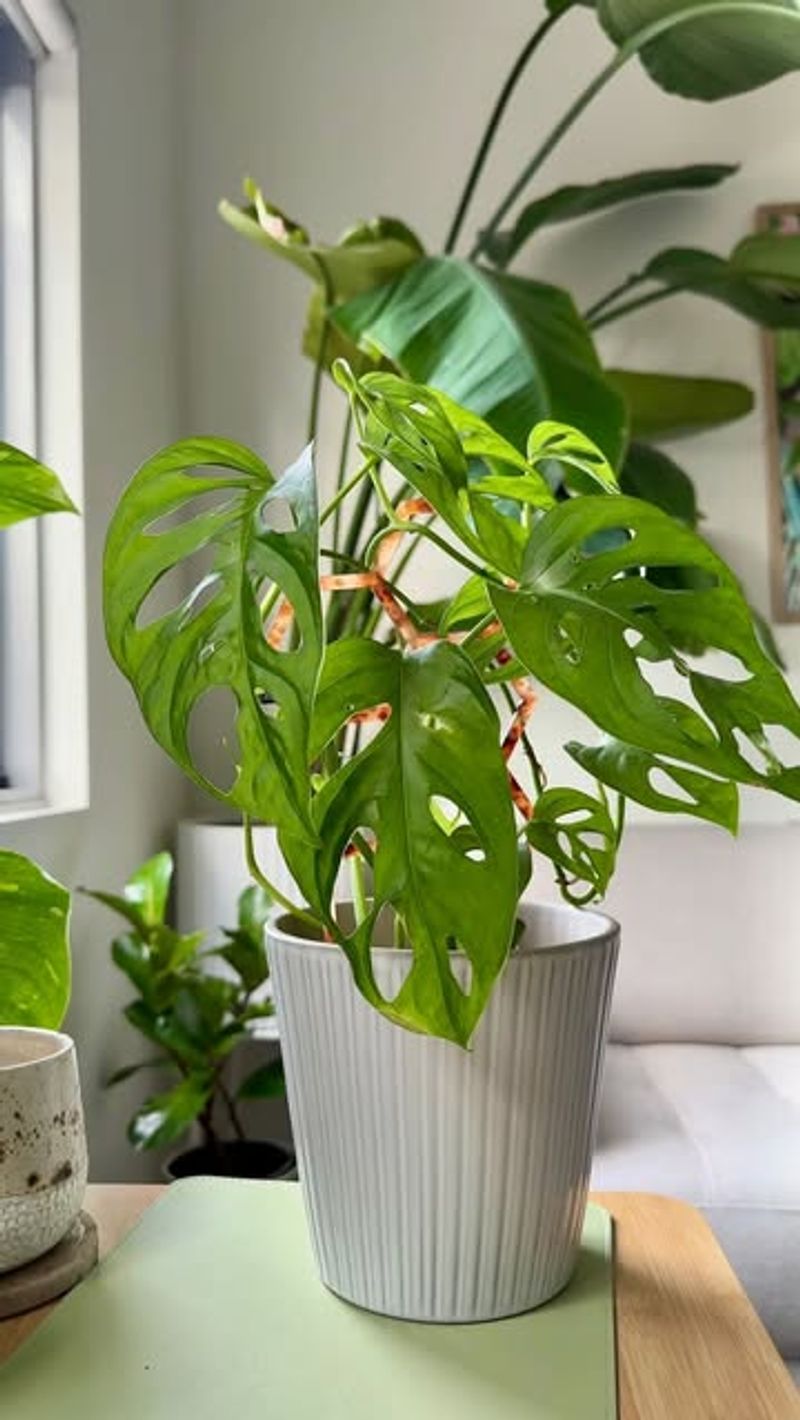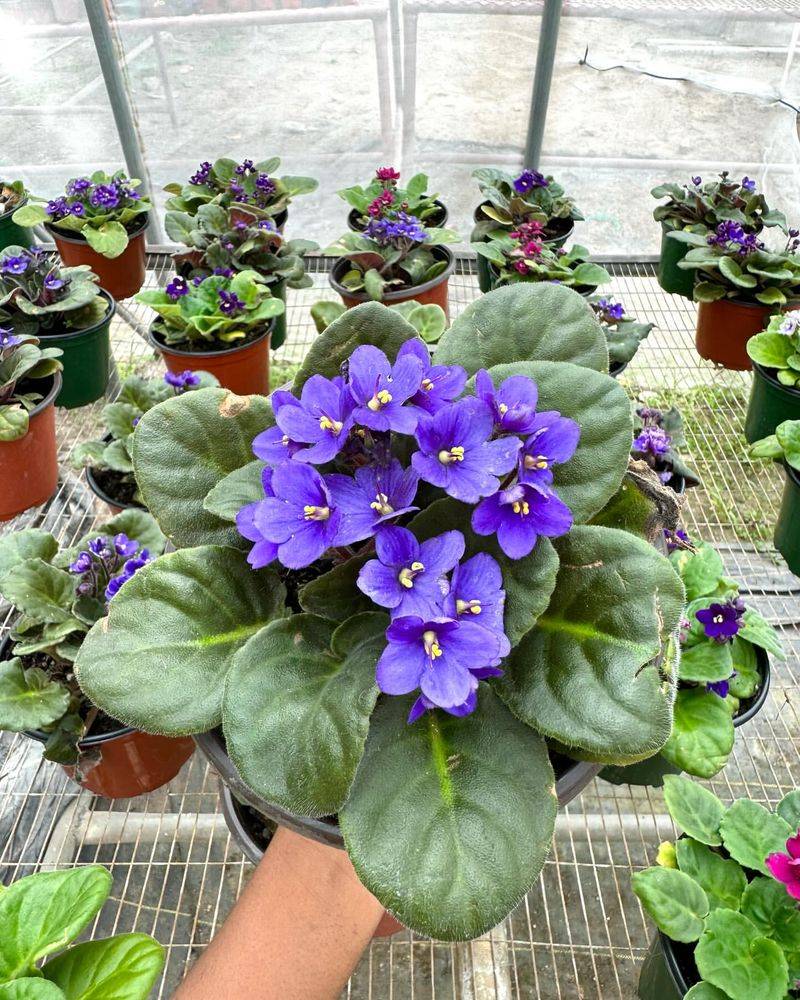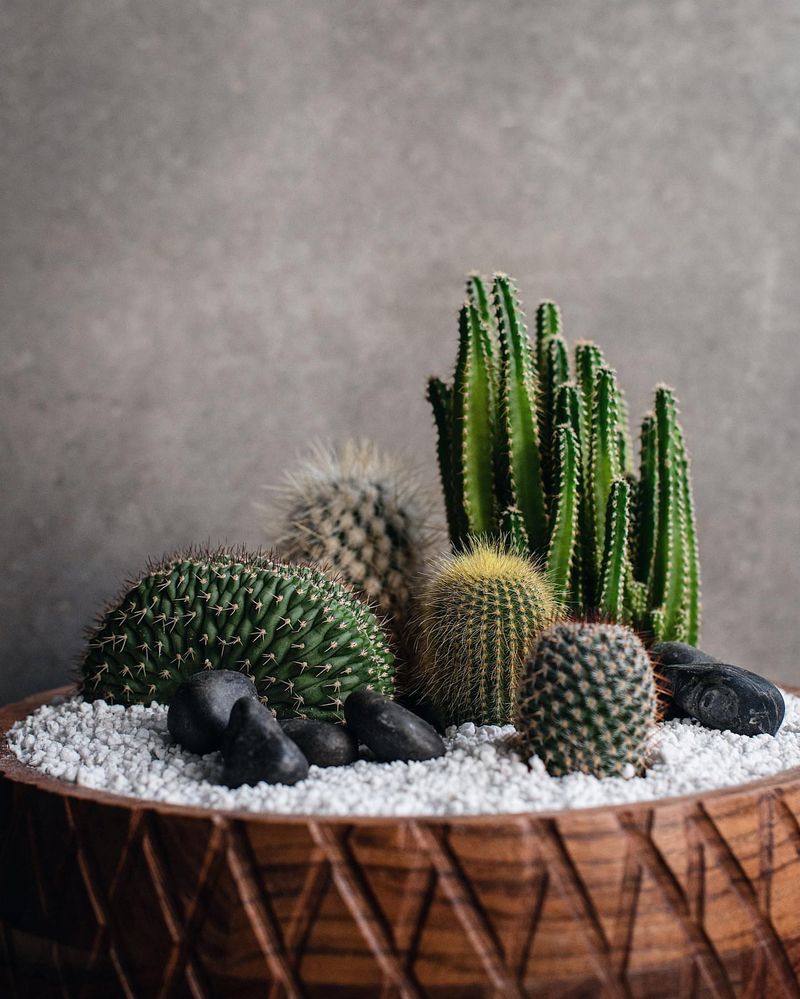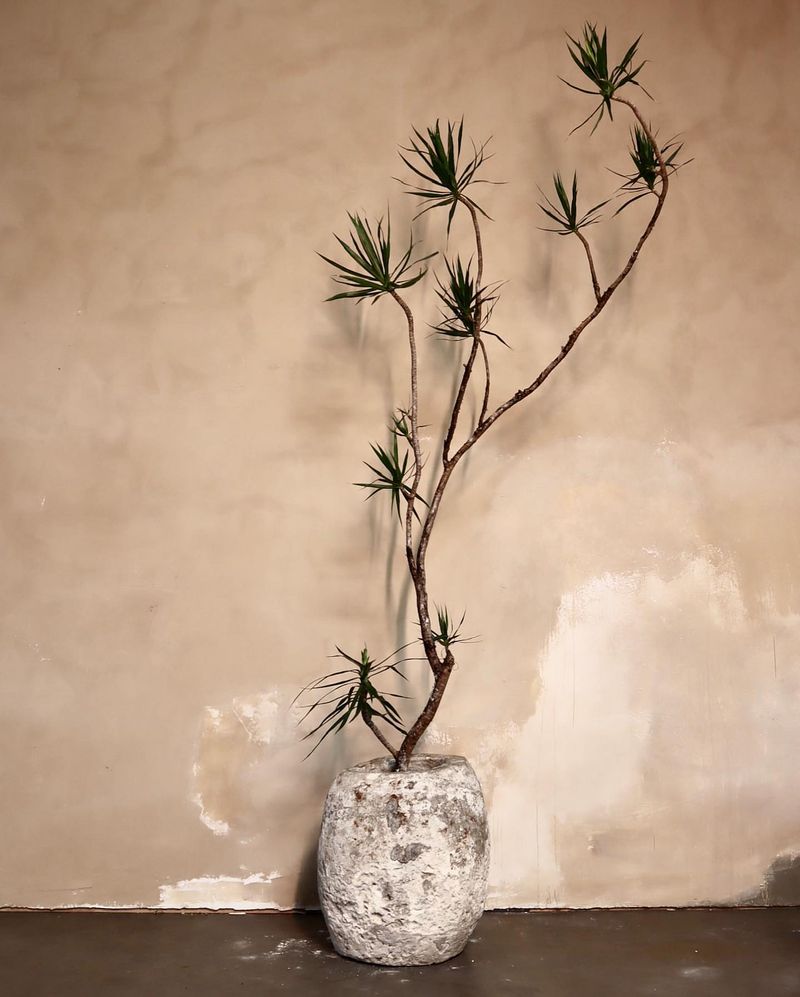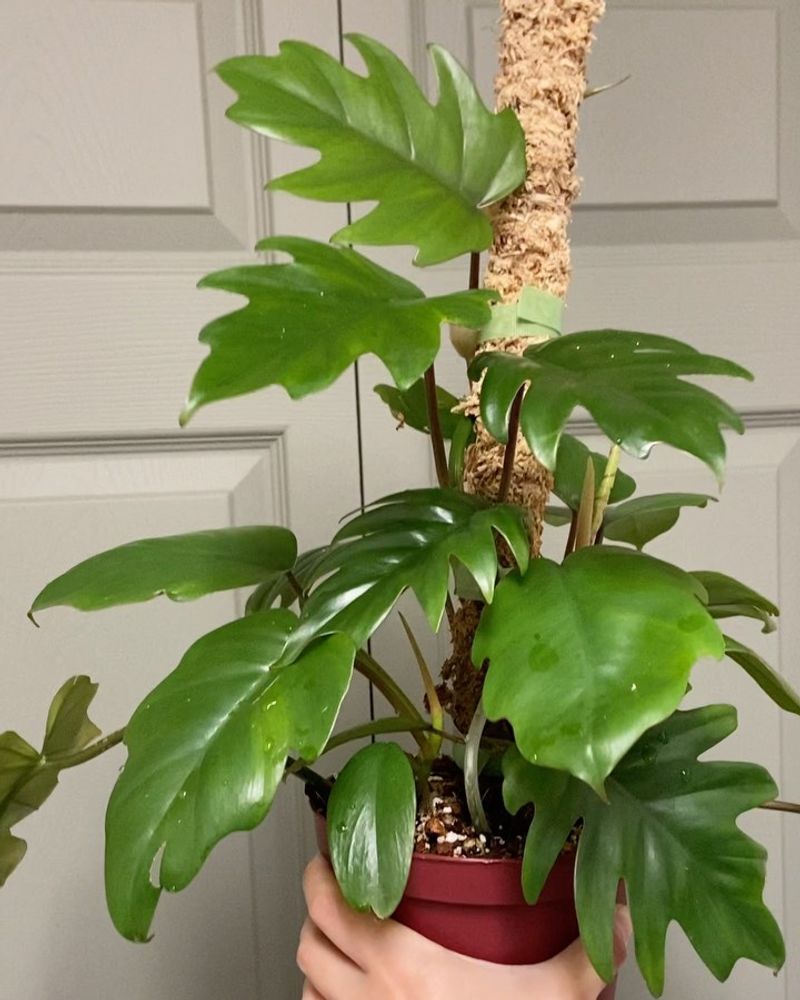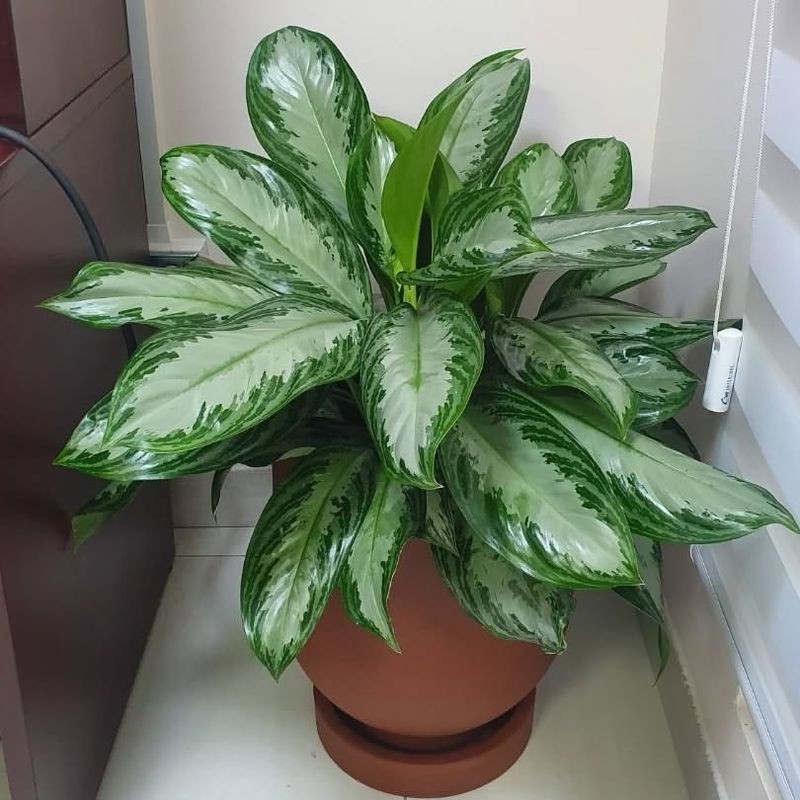Your Alabama houseplants might be silently suffering in their current homes. Our state’s unique climate creates special challenges for indoor plants, especially when they’re stuck in the wrong containers.
Many common houseplants show subtle signs of distress that most plant parents miss until it’s too late.
1. Peace Lily Protests
Peace lilies droop dramatically in Alabama homes when their pots lack proper drainage. The humidity of our southern climate combined with poor drainage creates a soggy disaster for these elegant plants.
Switch to a pot with multiple drainage holes and mix in perlite with your potting soil. A ceramic container works better than plastic in our climate, allowing the soil to breathe while maintaining just enough moisture. Your peace lily will reward your efforts with gorgeous white blooms.
2. Fiddle Leaf Fig Frustrations
Alabama’s humid summers make fiddle leaf figs grow rapidly, causing them to become root-bound faster than in other regions. When trapped in too-small pots, these trendy plants develop brown, crispy leaf edges and eventually drop leaves entirely.
Repot your fiddle leaf fig annually into a container just 2-3 inches wider than the previous one. Terra cotta pots work wonderfully since they wick away excess moisture. Add a layer of lava rocks at the bottom to improve drainage and prevent the soggy conditions these plants despise.
3. Snake Plant Suffocation
Snake plants might seem indestructible, but Alabama’s humid environment makes them prone to root rot when confined to decorative pots without drainage. Their roots actually prefer being somewhat cramped, but they absolutely need dry periods between watering.
Place your snake plant in a well-draining terracotta pot with cactus soil, then set this inside your decorative container. After watering, empty any collected moisture from the outer pot within 30 minutes. During Alabama’s most humid months (July-August), water even less frequently to prevent fungal issues.
4. Pothos Predicaments
Pothos vines grow like crazy in Alabama’s climate, quickly becoming a tangled mess of roots inside their pots. When the roots circle the pot’s interior completely, your plant stops producing those lovely heart-shaped leaves.
Choose a hanging basket with a width at least equal to the plant’s height. Line it with coconut coir instead of plastic to allow air circulation. Alabama’s humidity means pothos roots need breathing room! Trim back one-third of the roots during repotting to encourage fresh growth and prevent the plant from becoming top-heavy.
5. Aloe Vera Aggravation
Aloe plants store water in their fleshy leaves, making them particularly sensitive to Alabama’s already-humid environment. Standard plastic pots trap moisture around their roots, leading to mushy stems and eventual collapse.
Shallow, wide terracotta pots allow aloe’s surface roots to spread naturally while wicking away excess moisture. Mix equal parts potting soil and coarse sand to mimic aloe’s native desert conditions. Position your repotted aloe near a south-facing window where Alabama’s abundant sunshine will help evaporate excess moisture.
6. Orchid Outrage
Many Alabama plant lovers keep orchids in decorative ceramic pots, wondering why these tropical beauties refuse to rebloom. The combination of our state’s natural humidity and waterproof containers creates a deadly environment for orchid roots.
Transparent plastic orchid pots with abundant side holes allow roots to photosynthesize and access air. Place these inside decorative containers, removing them during watering. Use orchid bark instead of soil, and elevate the inner pot on pebbles to prevent it from sitting in drainage water.
7. Rubber Plant Rebellion
Rubber plants develop massive root systems that quickly outgrow standard pots in Alabama’s growth-friendly climate. When confined, they drop lower leaves and develop weak, leggy stems that can’t support their weight.
These tropical natives thrive in deep pots that allow their roots to grow downward. Choose containers at least 1/3 taller than they are wide. A 50/50 mix of potting soil and orchid bark provides the perfect balance of moisture retention and drainage that rubber plants crave in our climate.
8. Spider Plant Struggles
Spider plants produce babies at lightning speed in Alabama’s climate, quickly becoming root-bound. Their sensitive roots turn brown and rotted when trapped in plastic nursery pots, especially during our humid summers.
Hanging baskets with coconut coir linings make ideal homes for spider plants, allowing their cascading babies to dangle naturally. The breathable lining prevents root rot while maintaining enough moisture. Remove and replant the babies when they develop their own roots to prevent the mother plant from becoming stressed by supporting too many offspring.
9. Boston Fern Frustration
Boston ferns turn crispy and brown in typical houseplant pots, despite Alabama’s humidity. Their shallow, spreading root systems suffocate when forced into standard containers, causing fronds to dry out even with regular watering.
Shallow, wide containers allow fern roots to spread naturally across the surface rather than growing downward. Line the bottom with sphagnum moss to retain moisture without creating soggy conditions. Place the pot on a humidity tray filled with pebbles and water to create the microclimate these delicate plants crave.
10. ZZ Plant Zorrows
ZZ plants develop potato-like rhizomes that store water, making them surprisingly intolerant of Alabama’s standard potting practices. When planted in decorative pots without drainage, these rhizomes rot quickly in our humid climate.
Choose a container with a width twice the plant’s diameter to accommodate spreading rhizomes. Use extremely well-draining soil mixed with pumice or lava rock. Terracotta pots pull excess moisture from the soil, creating ideal conditions for these drought-tolerant plants. In Alabama’s humid summers, water only when the soil is completely dry to the touch.
11. Calathea Complaints
Calatheas develop brown, crispy leaf edges in Alabama homes when their pots dry out unevenly. These prayer plants have delicate root systems that struggle in traditional plastic nursery pots during our hot summers.
Self-watering containers with wicking systems provide consistent moisture that calatheas crave. Choose glazed ceramic pots that insulate roots from temperature fluctuations. Mix orchid bark into your potting soil to improve drainage while maintaining humidity around the roots. Group multiple calatheas together to create a microclimate that mimics their natural rainforest understory habitat.
12. Monstera Misery
Monsteras grow exponentially faster in Alabama’s climate than in cooler regions, quickly outgrowing standard pots. Their aerial roots hang limply instead of attaching to supports when confined to typical containers.
Choose deep, wide pots with built-in trellises or moss poles. These climbing plants need something to grab onto! Add a layer of sphagnum moss around the base to keep aerial roots moist and encourage them to attach to supports. During Alabama’s growing season (April-October), expect to repot young monsteras annually into containers at least 2 inches wider.
13. African Violet Vexations
African violets develop fuzzy, rotting leaves when their crowns get wet in traditional top-watering situations. Alabama’s humidity exacerbates this problem, especially when these delicate plants sit in decorative cachepots without drainage.
Special self-watering African violet pots with wicking reservoirs keep leaves dry while providing consistent moisture to roots. The double-pot system creates the perfect environment for these sensitive bloomers. Choose plastic over ceramic for these particular plants, as the lightweight material doesn’t get as cold during Alabama’s occasional winter temperature drops.
14. Succulents Surrendering
Succulents stretch and become pale when potted in standard containers in Alabama homes. Our naturally high humidity combined with typical potting soils creates fatal conditions for these desert natives.
Shallow terracotta dishes allow excess moisture to evaporate quickly through both the soil surface and porous container walls. Create a custom mix of 50% cactus soil, 25% perlite, and 25% coarse sand for superior drainage. Top-dress with decorative gravel to prevent Alabama’s humid air from keeping the soil surface constantly moist.
15. Dracaena Despair
Dracaenas develop brown leaf tips and yellow streaks when their roots are compressed in too-small containers. Alabama’s warm climate accelerates their growth, causing them to become severely root-bound within a single season.
These tropical plants need tall, narrow pots that accommodate their vertical root systems. Choose containers at least one-third taller than they are wide. A mixture of standard potting soil with added pumice improves drainage while maintaining necessary moisture. Allow the top two inches of soil to dry completely between waterings to prevent the root rot that’s common in our humid climate.
16. Philodendron Predicaments
Philodendrons grow at astonishing rates in Alabama’s climate, quickly filling their pots with roots instead of producing lush foliage. When cramped, their leaves remain small and widely spaced along leggy stems.
Hanging baskets with coconut coir linings provide ideal growing conditions, allowing roots to breathe while maintaining moisture. For climbing varieties, choose deep pots with sphagnum moss-covered stakes. Alabama’s natural humidity helps these tropical natives thrive, but they still need excellent drainage to prevent the soggy soil conditions that lead to yellow leaves.
17. Chinese Evergreen Complaints
Chinese evergreens develop yellow, drooping leaves when their roots circle plastic nursery pots. Alabama’s warm indoor temperatures accelerate growth, causing these popular houseplants to become root-bound faster than in cooler climates.
Wide, shallow containers accommodate their spreading root systems better than standard deep pots. A mixture of potting soil, orchid bark, and perlite creates the well-draining yet moisture-retentive environment they prefer. Plastic pots work better than terracotta for these particular plants in our climate, as they prevent the soil from drying too quickly.

